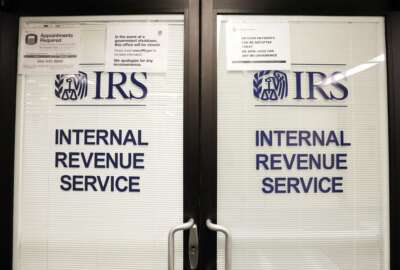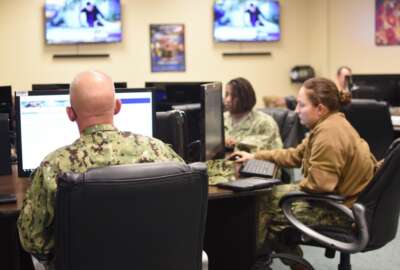Time for feds to get back to the office
If people can see Wrestlemania in person, why can't at least some federal offices start to repopulate?
Disneyland is letting people back into its Anaheim, California, garden spot. Baseball games have fans in the stands. Even the indoor event WrestleMania occurred in Tampa, Florida with an in-person audience – reportedly 25,000 people.
I myself attended a Washington Nationals double-header last week, after the District of Columbia allowed the team to admit 5,000 people. Alas, the two losses were nearly as predictable as the choreographed outcomes in Tampa. Nationals Park operators thought of everything, from “pod” seating throughout the lower two levels, down to touchless ketchup dispensers. Come to think of it, I hope they leave those in place for good.
It’s time for feds to return to their offices, even if not 100% of pre-pandemic occupancy.
The Office of Personnel Management’s February COVID-19 safety plan discusses in detail the process by which offices may reopen and under what conditions. But that’s only for OPM employees. The Safer Federal Workforce Task Force, a Day-One gambit of the Biden administration, is the recipient of other agencies’ plans.
The trend so far has been to limit on-site work to those for whom it is absolutely necessary. For example, law enforcement field personnel for the Justice Department. For State, people who do passports are back at work, and facing a considerable applications backlog.
I urge the administration and the agency heads to get much more aggressive, not to cram everyone back at work cheek-by-jowl, but rather to get going with operations that reflect the reality of April 2021, not April 2020. Tens of millions of people are vaccinated. The spread mechanisms — and what does not spread COVID — are known in more detail. Industry has reestablished supply chain assurance for all the required junk, like masks and wipes.
In my perfect world, two-thirds of people would go to work on a given day and one-third would telework. That would restore roughly normal work life while permanently reducing traffic. The temporary and fading lightness of traffic was about the only good thing from the pandemic.
The government also needs an up-to-date plan because by the General Services Administration’s own estimate more than half of its office leases will have expired by 2023. If some level of telework higher than it was in February 2020 will be a permanent thing, how much square footage will the government need? If confirmed as GSA administrator, Robin Carnahan will lead a decision-making on agencies that might be better off consolidating or whether the cubicle-per-person model should give way to more widespread “hoteling.”
It’s getting past the time to figure this all out.
Beyond all of this lies the question of what is really best for employees in the long run. Yes, productivity has been terrific with mass teleworking. Yes, agency IT people have adjusted their infrastructures for secure and adequate remote access.
But is this the best long-term arrangement?
No.
Terrific as the video conferencing applications might be, they are no substitute for in-person collaboration. Nor do they lend themselves to the sense of trust and teaming that having colleagues on scene engenders. The human species is a social one, and social ultimately means in person. Many of the small but important, spur-of-the moment interactions simply don’t take place when everyone is remote.
Copyright © 2025 Federal News Network. All rights reserved. This website is not intended for users located within the European Economic Area.
Tom Temin is host of the Federal Drive and has been providing insight on federal technology and management issues for more than 30 years.
Follow @tteminWFED






